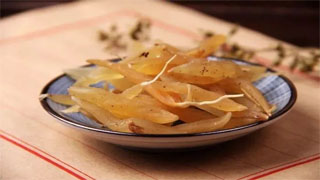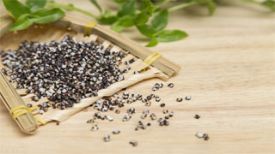
1. Alias
Tianmendong, Xiaoye Qing, Sanbai Stick, Dadangmen Root.
2. Plant morphology
Perennial climbing herb, completely hairless. The tuberous root is fleshy and swells in a spindle shape in the middle and near the end. The stem cannot stand upright, and the branches have edges or narrow wings; Leafy branches usually cluster every 3, flat, or slightly triangular or sickle shaped due to the keel like midrib, degenerated; The leaves are scaly, with a pointed tip at the top and woody spines at the base that are shorter or less prominent on the branches. Flowers usually have 2 axillary flowers, unisexual, dioecious, light green in color; Male flowers have 6 perianth segments, with stamens slightly shorter than the perianth and filaments not attached to the perianth segments. The anthers are ovate in shape; Female flowers are similar in size to male flowers, with 6 degenerated stamens. Berry spherical, red when ripe; Having one seed. The flowering period is from May to July, and the fruiting period is in August.
3. Origin distribution
Born in damp mountain forests, grassy slopes, or shrubs in hilly areas, it is also cultivated. Distributed in Gansu, Sichuan, Guizhou, Yunnan and other places.
4. Harvesting and processing
In autumn and winter, dig, wash, remove the stem base and fibrous roots, boil or steam in boiling water until the core is penetrated, remove the outer skin while hot, wash, and dry.
5. Characteristics of medicinal herbs
Long spindle shaped, slightly curved, 5-18 centimeters long, 0.5-2 centimeters in diameter. The surface is yellow white to light yellow brown, semi transparent, smooth or with varying depths of longitudinal wrinkles, occasionally with residual gray brown outer skin. Hard or soft, sticky, with a keratinous cross-section and a yellow white central column. Qi is subtle, with a sweet and slightly bitter taste.
6. Sexual Taste Returning to the Classics
Cold in nature, sweet and bitter in taste. Return to the lung meridian and kidney meridian.
7. Effect and Function
Nourish yin and moisten dryness, moisten the lungs and produce fluids. A Yin tonifying medicine classified under the category of deficiency tonifying medicine.
8. Clinical application
Dosage: 6-12 grams, decoct and take orally. Used to treat lung heat, dry cough, intermittent cough, phlegm viscosity, dry throat, thirst, intestinal dryness, and constipation.
9. Pharmacological research
In clinical practice, it is used to treat breast tumors, dilate the cervix, and uterine bleeding. Antibacterial, killing larvae, anti-tumor.
10. Chemical composition
This product contains chemical components such as glycosides, saponins and their aglycones, amino acids, sugars, etc. Containing aspartic acid, 5-methoxy-methylfurfural, glucose, fructose, β - sitosterol, mucilage, and steroidal saponins. Animal experiments have shown that the decoction has antibacterial, antitussive, anti-tumor, and insecticidal effects.
11. Usage taboos
Individuals with diarrhea caused by deficiency cold and coughing caused by wind cold are prohibited from taking it.
12. Related prescriptions
① To treat dryness and heat in the lungs and stomach, as well as phlegm, astringency, and cough: divide into two parts: Asparagus (for removing the heart) and Ophiopogon japonicus (for removing the heart). Boil two flavors of ointment, refine white honey, and occasionally swallow with heat. (Zhang Shi Yi Tong "Er Dong Gao)
② Treatment of vaginal discharge in women: mash the juice with aspartic acid and mix it with well water. (Pope Francis)
③ Breastfeeding: 60 grams of aspartic acid. Stewed meat costume. (Yunnan Chinese Herbal Medicine)
④ Treatment for restlessness: 15g each of Ophiopogon japonicus and Ophiopogon japonicus, 9g water willow. Boil it in water. (Hunan Pharmaceutical Journal)
⑤ Treatment for tonsillitis and sore throat: 9 grams each of Asparagus japonicus, Ophiopogon japonicus, Radix Isatidis, Platycodon grandiflorum, and Radix Sophora alopecuroides, and 6 grams of licorice. Boil it in water. (Shandong Herbal Medicine Handbook)
⊙ The content of the article is for clinical reference only. Non TCM professionals are not allowed to test drugs.


